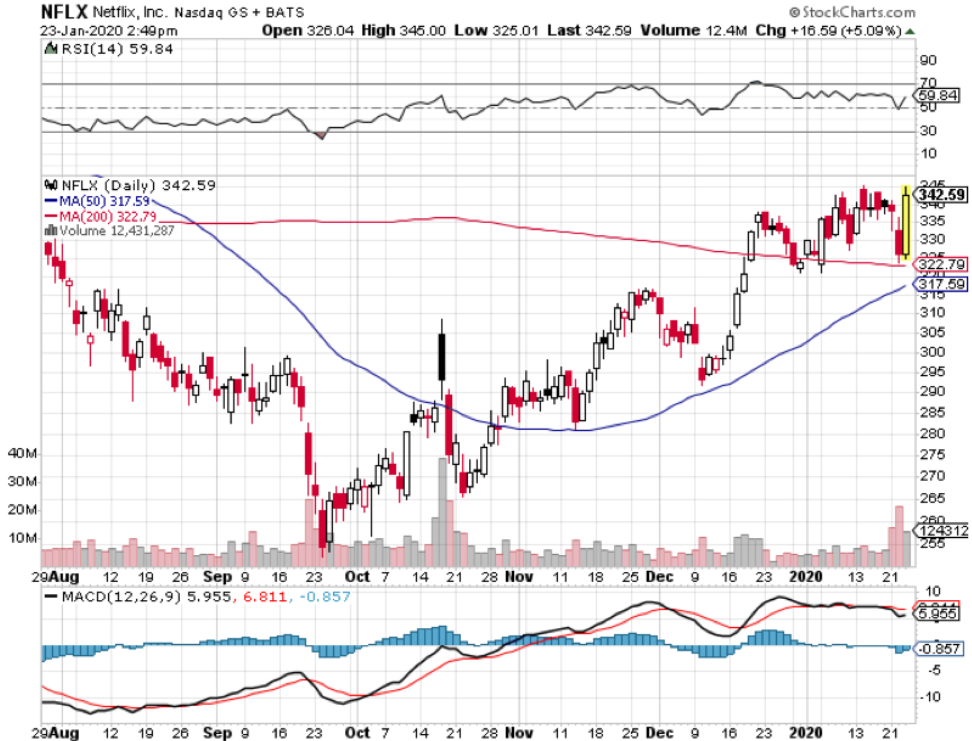The Netflix Earnings Shocker
Netflix is saying no to over $2 billion in extra digital ad revenue – that is the critical takeaway from Netflix’s earnings call that fell in line with exactly what I thought would transpire.
As Netflix’s domestic subscriptions continue to soften, this is the first of many earnings calls where management will be put to the sword on why they still haven’t swiveled to digital ads.
As you guessed right, Founder and CEO Reed Hastings pulled out all the usual excuses explaining why Netflix is leaving a massive chunk of revenue on the table.
Some of his evasive rhetoric came in the form of explaining there’s no “easy money” in an online advertising business that has to compete with the likes of Google, Amazon, and Facebook.
He continued to spruce up his excuses by saying, “Google and Facebook and Amazon are tremendously powerful at online advertising because they’re integrating so much data from so many sources. There’s a business cost to that, but that makes the advertising more targeted and effective. So I think those three are going to get most of the online advertising business.”
Even most peons would understand that Netflix’s network effect is so robust that they could turn on the digital ad revenue spigots with a flick of a wrist.
It doesn’t matter that there are also three other tech firms in the digital ad sphere.
Netflix certainly has the infrastructure in place and manpower laid out to harness the power lines of the digital ad game.
Hastings weirdly lamented that revenue would need to be “ripped away” from the existing providers, he continued. And stealing online advertising business from Amazon, Google and Facebook is “quite challenging.”
I don’t believe that is entirely accurate.
Dipping into that digital ad revenue would be quite challenging if you are a 2-man start-up, but the power centrifuge that has become to be known as Netflix is stark crazy for taking the high road on data privacy when the US government still allows tech companies to profit off of digital ads.
The musical chairs might stop in less than 3 years, but not now.
It’s hard to understand why Netflix isn’t approaching this as a short-term smash and grab type of business.
If they really wanted to, they could have layered each service into ads and non-ad subscriptions just like Spotify does.
If muddying their premium service is taboo, then there are alternative solutions.
I understand and agree with Hastings that delivering “customer pleasure” is the ultimate goal, but that doesn’t mean there can’t be an ad-based model as one of the options.
I believe this is a substantial letdown to the shareholder and the stock price would be closer to $500 if there was a realistic ad revenue option.
Even worse, Hasting’s argument for not delving into digital ads is flawed by saying, “We don’t collect anything. We’re really focused on just making our members happy.”
That is materially false.
Netflix already tracks loads of data and it doesn’t take a Ph.D. data analyst to ignore that when you are busy perusing the Netflix platform, Netflix’s are tracked non-stop.
Netflix uses algorithms to track user’s behavior through tracking viewership data in order to make critical decisions about which of its original programs should be renewed and which should be booted.
It also looks at overall viewing trends to make decisions about which new programs to pursue.
It then also tracks user's own engagement with Netflix’s content in order to personalize the Netflix home screen to user’s preference.
Netflix is already “exploiting users” and they are doing shareholders a massive disservice by not maximizing revenue to the full amount they can.
And yes, I do agree Netflix is not as good as Facebook, Google, and Amazon at tracking users, but the roadmap is certainly out there for Netflix to indulge in digital ads.
It would take less than 18 months for Netflix to be running on full cylinders if they poached a few experts.
Aside from the lack of digital ads, Netflix finally is starting to acknowledge the new competition from two major streaming services, Disney+ and Apple+ — both of which have subsidized their launch with free promotions in order to gain viewership.
Then it gets worse with streaming service Quibi, WarnerMedia’s HBO Max and NBCU’s Peacock rolling out.
The latter features a multi-tiered business model, including a free service for pay-TV subscribers, an ad-free premium tier and one that’s ad-supported.
Other TV streaming services also rely on ads for revenue, including Hulu and CBS All Access. Meanwhile, a number of ad-supported services are also emerging, like Roku’s The Roku Channel, Amazon’s IMDb TV, TUBI, Viacom’s Pluto TV, and others.
Considering much of Netflix’s rise is fueled on debt, it’s bonkers they aren’t going after every little bit of revenue that is there for the taking.
Netflix could lose 4 million subscribers this year, and sooner or later, Hastings will run out of places to hide.
Slowing domestic subscriber growth and bad guidance don’t sound like a roaring growth tech stock to me.



